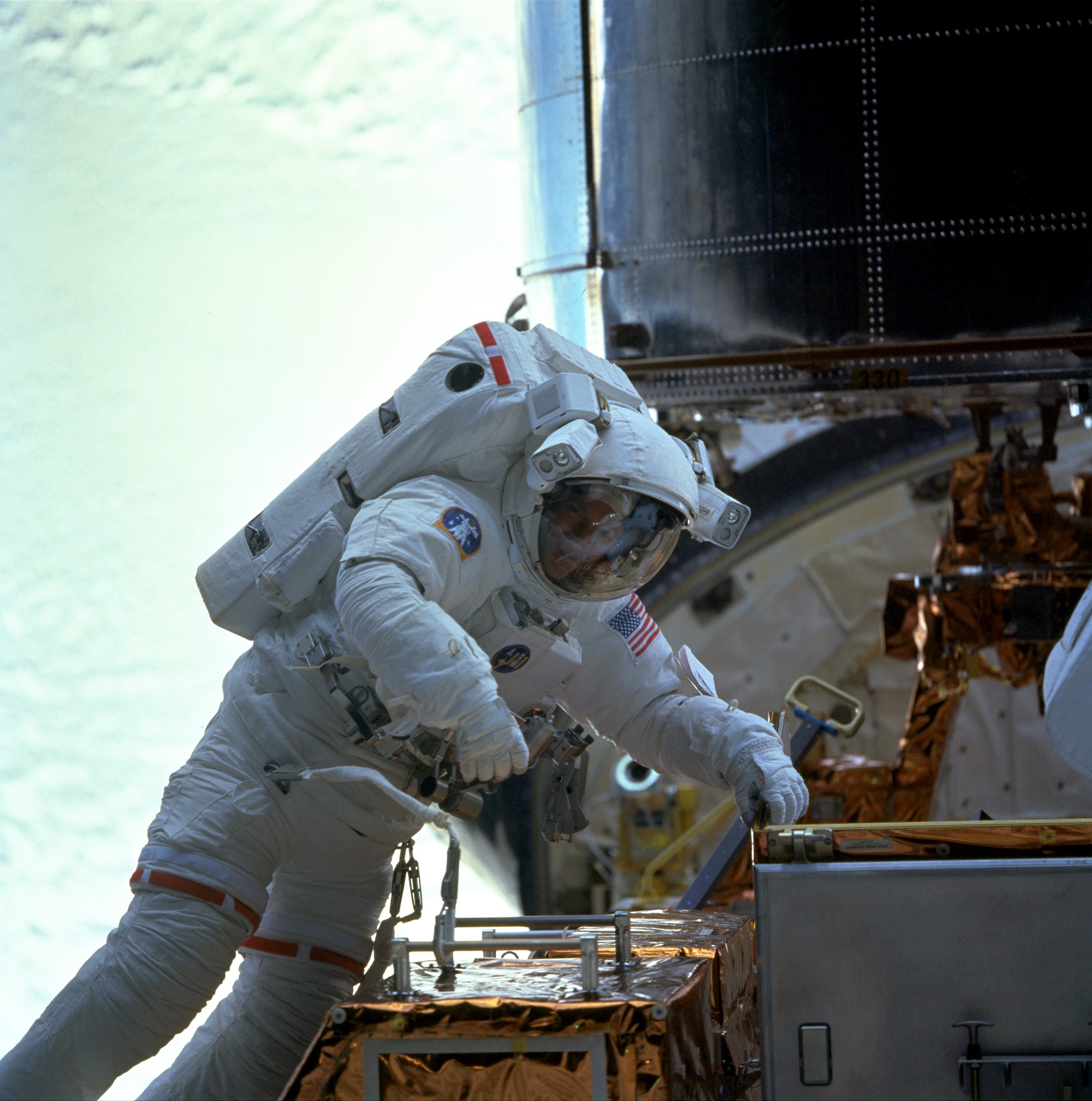
Last week’s announcement by NASA of the retirement of astronaut Mike Foale leaves just one representative—Tim Peake—on active status to carry the baton into space for Britain. Although Foale carried dual U.S. and British citizenship, with an American mother and an English father, and although he wore the Stars and Stripes on his flight suit, he was for many years held in high esteem by Britons as “one of our own.” During a 26-year career with NASA, he flew six space missions and accrued more than 373 days in orbit. His achievement was recognized with a Commander of the British Empire (CBE) award in the Queen’s New Year’s Honours List in December 2004.
Colin Michael Foale came from Louth in Lincolnshire, England, where he was born on 6 January 1957, the son of a Royal Air Force pilot father and U.S. mother. “I grew up with the sound of jets,” Foale later told the NASA oral historian, “and I lived in exotic places and I developed a taste for not so much adventure, but new vistas, new places, new things. I quickly decided that I wanted to fly.” Frequent visits to his mother’s family in Minnesota introduced him to the space program as a child, when he saw John Glenn’s Friendship 7 capsule in the state fair. “My father didn’t discourage in any means my interest in being a pilot or an astronaut,” he reflected. “I’m not sure he credited very realistic my dreams and aspirations there, especially since Britain did not have—and still does not have—a human spaceflight program. However, there was quiet support.”
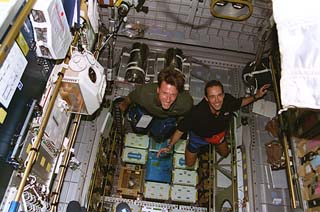
A test piloting and military aviation career beckoned, but in his mid-teens Foale was misdiagnosed with a vision issue and it was this turning point which altered his focus toward the sciences. He entered Queen’s College, Cambridge, and would earn a first-class degree in physics in 1978. By the time the misdiagnosis was uncovered and he realised that his vision was perfectly fine for military aviation, NASA’s astronaut requirements had changed. Test piloting credentials were no longer mandatory and he could apply as a scientist. After his degree, he completed a PhD in laboratory astrophysics in 1982 and made his first move to NASA the following year.
In June 1983, Foale entered the Johnson Space Center in Houston, Texas, as a payload officer in Mission Control. He unsuccessfully applied for admission into the astronaut corps in 1984 and 1985, but in the aftermath of the Challenger disaster he altered the focus of his application essay from describing his own dreams to considering the managerial realities faced by NASA. On his third attempt, he was accepted as an astronaut candidate in June 1987. Two years later, he was one of the first members of his class to be selected for a spaceflight, and in March 1992—only days before the launch of his first mission, STS-45/ATLAS-1—Foale was named as payload commander of ATLAS-2, scheduled for the early 1993. It was the start of an illustrious, six-flight career which would see him become the first person of British nationality to perform an EVA, complete a long-duration flight, service the Hubble Space Telescope, and command the International Space Station.
Foale’s six missions were:
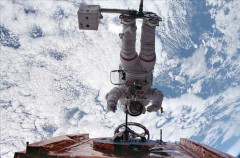
STS-45: This nine-day flight in March 1992 carried the first Atmospheric Laboratory for Applications and Science (ATLAS-1) payload, dedicated to studies of the Earth’s atmosphere and climate and the interaction of the Sun. Foale served as a mission specialist on the flight.
STS-56: A little over a year later, in April 1993, Foale served as payload commander for the ATLAS-2 mission, which also featured the successful deployment and retrieval of a Spartan solar physics satellite.
STS-63: In February 1995, as flight engineer aboard STS-63, Foale became the first person of British nationality to perform an EVA when he spent four hours and 39 minutes working with crewmate Bernard Harris. The mission carried the Spacehab science module, deployed and retrieved a Spartan solar science satellite, and performed a close rendezvous with Russia’s Mir space station.
STS-84/86: In May 1997, Foale was launched aboard STS-84 as the fifth U.S. astronaut to spend a period of several months aboard Russia’s Mir space station. He endured the collision of a Progress cargo craft, which partially depressurized the station’s Spektr module, and participated in a six-hour EVA with cosmonaut Anatoli Solovyov to inspect the damage. Returned to Earth aboard STS-86 in October 1997, Foale accrued 144 days in orbit.
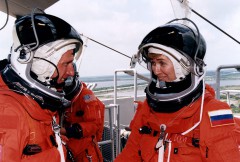
STS-103: In December 1999, Foale served as one of four EVA specialists aboard STS-103, the third dedicated mission to service the Hubble Space Telescope. He participated in one of the spacewalks to install new equipment aboard the iconic telescope.
ISS Expedition 8: In October 2003, Foale launched alongside Russia’s Aleksandr Kaleri aboard Soyuz TMA-3 for a six-month stay aboard the International Space Station. As commander of Expedition 8, Foale guided efforts to ensure that the multi-national outpost remained operational during the lengthy period of down time after the loss of Columbia. Foale and Kaleri performed a four-hour EVA in February 2004 and returned to Earth in April, after 194 days in space.
In flying his final mission, Foale became one of only a handful of astronauts or cosmonauts to record six or more space voyages. Even today, only seven other human beings have recorded six or more spaceflights: John Young, Story Musgrave, Franklin Chang-Diaz, Jerry Ross, Curt Brown, Jim Wetherbee, and Russia’s Sergei Krikalev. At the close of Expedition 8—with a cumulative 373 days in space—Foale became the most flight-experienced U.S. astronaut to date. His achievement remained unbroken for almost four years, until it was finally exceeded in April 2008 by Peggy Whitson and most recently by Mike Fincke in May 2011. At the time of writing, Foale remains the third most flight-experienced U.S. astronaut, and he spent over 22 hours outside spacecraft during his four career EVAs.
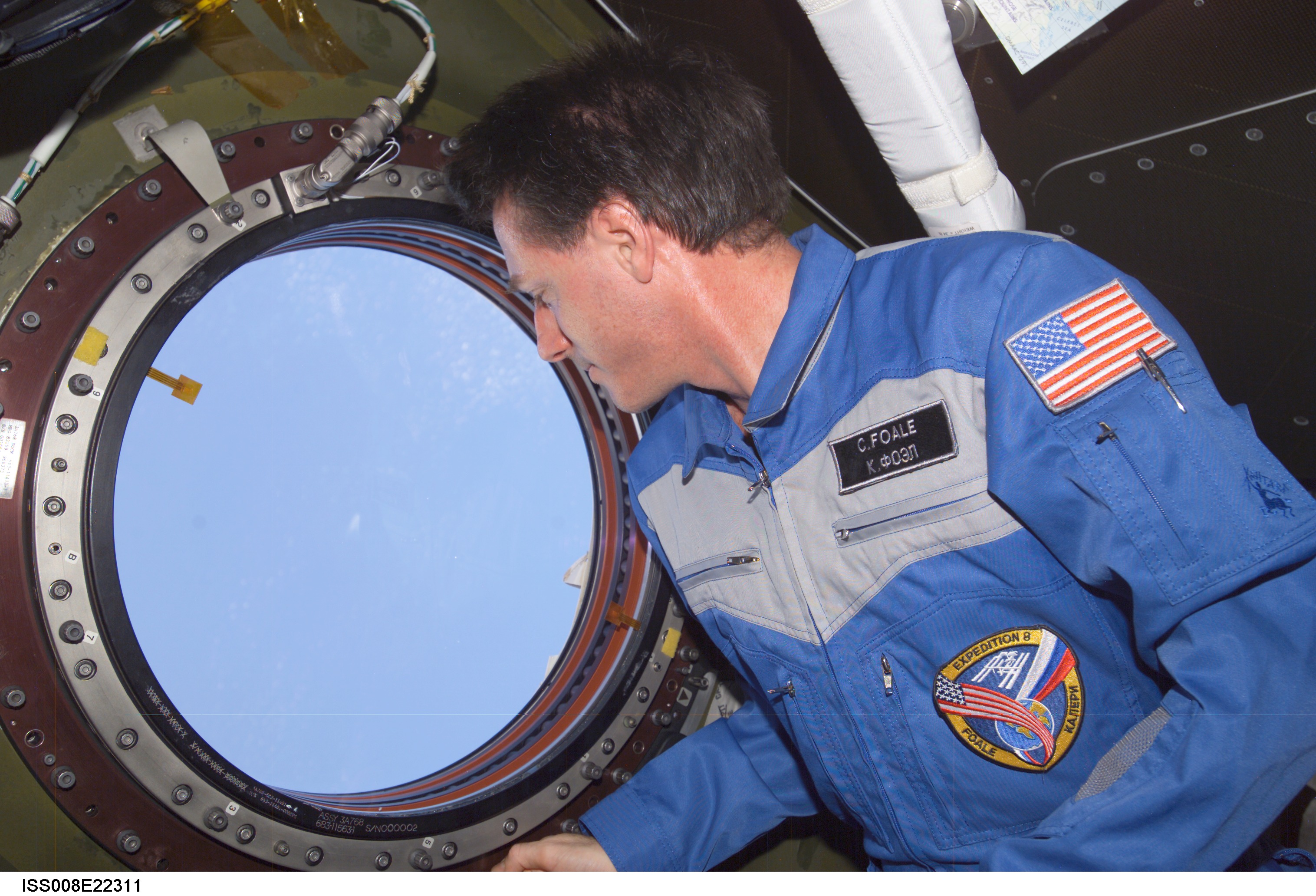
Since his return from Expedition 8, Foale was until last week consistently listed as an “Active” astronaut, although the sheer number of astronauts-in-waiting made it unlikely that he would draw a seventh mission. He served as chief of the astronaut office’s Expedition Corps and deputy associate administrator for Exploration Operations at NASA Headquarters in Washington, D.C. Additionally, Foale worked to support Soyuz and ISS operations, together with EVA activity and ongoing space suit development.
Foale’s next steps are reported to encompass green aviation technology. NASA Administrator—and former astronaut—Charlie Bolden was in command of STS-45 on Foale’s first flight. “We salute Mike and his contributions to NASA as an accomplished member of the astronaut corps,” Bolden said last week. “Starting with his first flight … when we flew together in 1992, Mike has worked tirelessly to support NASA’s quest to explore the unknown. I know Mike will go on to do more great things as he continues to support the aerospace industry in his new endeavor.”
Want to keep up-to-date with all things space? Be sure to “Like” AmericaSpace on Facebook and follow us on Twitter:@AmericaSpace




Hi,
My name is Jen and I am a teacher at the Folkestone Academy, Kent England. Within my school I am a Head of House and our house patriot is Michael Foale. We have never been able to make contact with him and I was wondering if you had a contact email address, phone number or number of an agent? To have a letter/email or any communication with Michael would be amazing for the 160 pupils in Foale house. Any help would be greatly appreciated.
Kindest Regards,
Jen Lelliott
Hi Jen,
Thank you for your comment. Unfortunately, I have no forwarding address or contact details for Mike Foale. Have you tried contacting NASA directly, as they will quite often be happy to forward enquiries to retired personnel? Failing that, I am sure that NASA would send some memorabilia associated with Foale’s missions for possible display in your school. Having met him once, back in London in 1995, I can say that Mike Foale is an inspirational speaker and a very worthy house patriot for your school.
I’m sorry that I couldn’t be more help to you on this occasion.
Best regards,
Ben